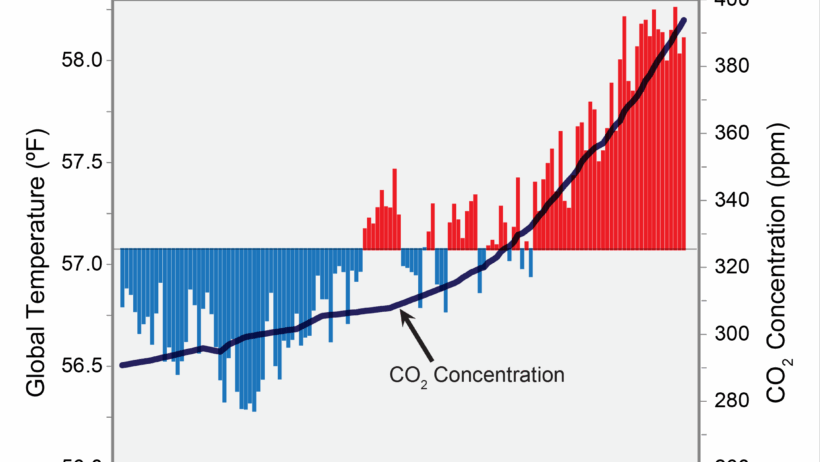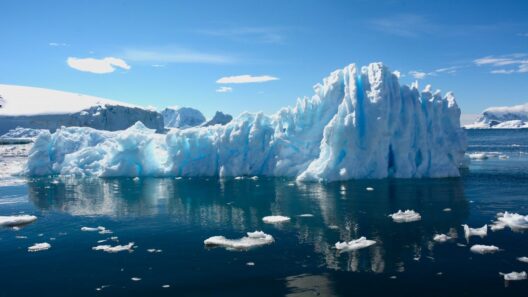In the realm of climate science, the thermometer stands as a sentinel, bearing witness to the slow but inexorable rise in global temperatures. Like the unassuming dial on an oven or the searing surface of asphalt on a summer’s day, it provides concrete evidence of a phenomenon we cannot afford to ignore: global warming. It is not merely a perceptual shift but an unequivocal change, a transformation analogous to the melting of ice cubes in a glass of whiskey, provoking a cascade of implications for our planet and future generations.
The rise of the Earth’s thermostat is not a recent discovery. Historical data illustrates a temporal tapestry woven with threads of temperature readings spanning over a century. From the freezing winters once common in temperate zones to the unprecedented heat waves sweeping across continents, the evidence is compelling. The decade that stretched from 2010 to 2019 was, according to numerous analyses, the hottest in recorded history. This stark reality is brought into sharper focus by scrutinizing the nuanced fluctuations over longer periods.
When juxtaposed against the backdrop of natural climatic variability, the upward trajectory of average global temperatures is alarmingly distinctive. The probe into temperature logs reveals that the last century has seen an average increase of approximately 1.2 degrees Celsius. This seemingly modest uptick, reminiscent of gentle waves lapping at the shore, masks a profound and tumultuous impact on ecosystems, weather patterns, and human livelihoods.
The metaphor of a pot simmering on the stove is apt—an increase in temperature by the smallest increment can lead to drastic changes. Just as a pot, if left unattended, will eventually boil over, so too can our planet reach tipping points, beyond which recovery may not be feasible. For instance, the warming oceans serve as a harbinger of ecological disruption. Coral reefs, often referred to as the rainforests of the sea, are succumbing to mass bleaching events caused by elevated sea temperatures, resulting in the loss of biodiversity and the destabilization of marine food webs.
The implications extend far beyond marine ecosystems. Rising temperatures are also manifesting in altered precipitation patterns—a phenomenon that is reshaping agricultural landscapes. Farmers, who have long relied on an intricate understanding of seasonal cues, now find themselves navigating uncertain waters. Crop yields are becoming increasingly unpredictable, exacerbated by the twin forces of drought in some regions and flooding in others. Food security is no longer a guarantee but an attainable luxury, susceptible to the caprices of a warming climate.
Moreover, the human experience is intimately tethered to these rising temperatures. Prolonged heatwaves, a direct consequence of climate change, are becoming increasingly prevalent. Urban areas, often termed “heat islands,” exacerbate this phenomenon. The concrete and asphalt absorb sunlight during the day and release it at night, creating an environment where temperatures soar. Vulnerable populations, especially the elderly and those without access to adequate cooling, bear the brunt of these thermal extremes. This burgeoning public health crisis necessitates that communities adapt their response strategies, fortifying health systems and enhancing emergency preparedness.
Furthermore, glacial melt, another critical indicator of rising temperatures, provides poignant evidence of climate change. Glaciers, often nicknamed the planet’s natural water towers, are retreating at astonishing rates. Once majestic ice sheets that crowned mountains are dwindling, contributing to rising sea levels that threaten coastal cities worldwide. The metaphor here is stark: as glaciers lose their grip on reality, the specter of inundation becomes all too real for those inhabiting low-lying regions.
The juxtaposition of the thermometer reading against the consequences of rising temperatures creates a compelling narrative—one that elucidates the essence of urgency. It serves as a strong reminder that each tick upwards on the scale corresponds to future generations who will inherit this altered world. The moral imperative to confront climate change becomes increasingly pronounced. We are not merely passive observers; we are participants in an intricate tapestry of life, responsible for the health of our planet.
Educational initiatives and community engagement are imperative components in this struggle against climate change. By disseminating knowledge about energy consumption, sustainable practices, and carbon footprints, society can inspire change at both individual and collective levels. The thermometer can indeed transform from a passive collector of data to an educational tool, galvanizing action in communities worldwide. When the public is armed with information, they can wield it as a tool for advocacy, pushing for policies that mitigate climate change and promote sustainability.
Innovation also plays a pivotal role in combating global warming. Technological advancements, such as renewable energy sources, present a viable antidote to our fossil fuel dependence. Solar, wind, and hydroelectric energy symbolize the shift from a carbon-intensive past towards a more sustainable future. This energy revolution reflects not only a recognition of our planet’s limits but also an appreciation of the economic opportunities embedded within this transition.
In conclusion, the proof found in the thermometer serves as a crucial indicator of the monumental shifts occurring within our climate system. The intertwining realities of rising temperatures, shifting ecosystems, and evolving human experiences paint a vivid portrait of the challenges ahead. To overlook this evidence would be akin to disregarding a warning sign on a treacherous road. Each temperature increase is a call to action: an invitation to reshape our relationship with the planet. In embarking on this journey, we hold the power to forge a sustainable future—one where the metaphor of a gentle simmer transforms into a resilient, thriving world.








